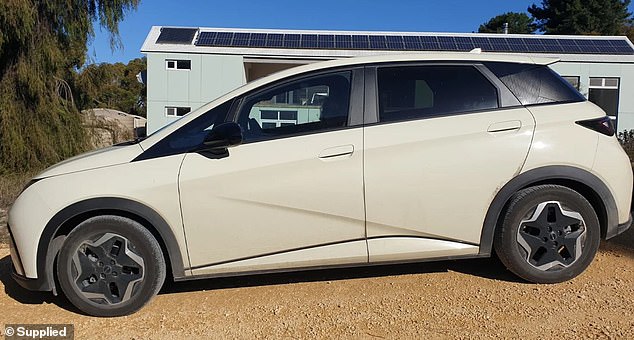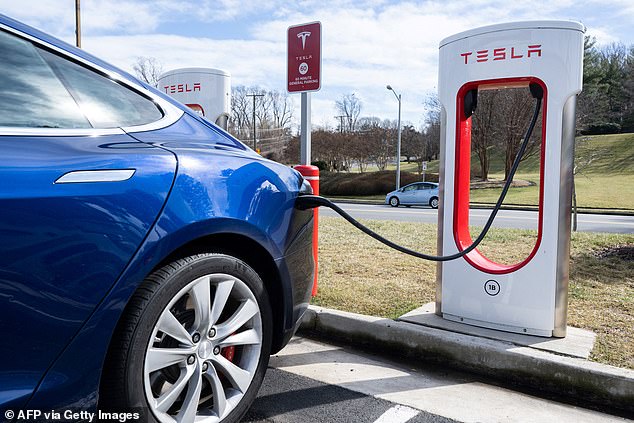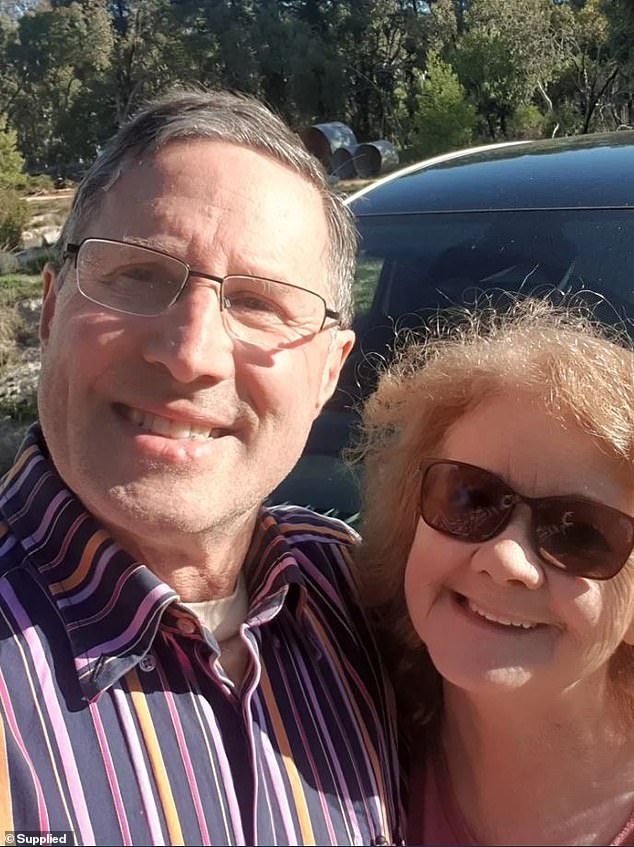A couple have exposed the difficulties of driving an “affordable” electric vehicle for long distances after taking an interstate road trip.
Tony Hill and his wife embarked on a 1,800-kilometre road trip from their home in Naracoorte, South Australia, to Grafton, New South Wales, to visit family.
The couple travelled in their new BYD Dolphin, the Chinese manufacturer’s smallest and most affordable model, which is priced at $36,890 before on-road costs.
The BYD offers Australians a cheaper alternative to a Tesla, which currently dominates the Australian electric vehicle market.
However, the Hills faced a number of problems during their trip in their BYD, which could have been avoided had they driven a Tesla.
To prepare for their long journey, the couple used an app to locate and map charging stations along the route.
They found that many of the power plants had Tesla chargers, which were not designed for or compatible with their electric vehicles.
“Normally we would have avoided Tesla chargers,” Hill said. Yahoo.
Tony Hill and his wife (pictured) embarked on a 1,800km road trip from their home in Naracoorte, a rural town in South Australia, to Grafton in New South Wales to visit family.

The couple travelled in their new BYD Dolphin (pictured), but faced a number of problems during their cross-country trip, which could have been avoided if they had been driving a Tesla.
‘Many of them have very short cables, designed only to reach the back of a Tesla… we had to park cleverly to be able to use them.’
Mr Hill added that BYD cars sold after October 2023 also had compatibility issues when using some Tesla Superchargers.
The couple faced another issue with the EV’s “onboard navigation” system after it directed them to non-existent chargers.
“Three of the first five chargers we were told about in Adelaide had not yet been built,” Hill said.
He said the navigation system told him to drive “on both sides of a 13-kilometer triangle” instead of suggesting a U-turn.
Another feature the Hills found less than ideal was the model’s glass roof.
While the feature allows for a panoramic view for the driver and passengers, Hill said it does little to filter out the heat of the Australian sun.
Mr Hill said he and his wife had to buy a screen to install in their car so they could stay cool during the journey.
He added that the BYD’s range was also “considerably reduced” when driving on motorways at high speed, meaning the Hills had to stop more often to recharge their car.
“The Dolphin is most efficient in the city, where regenerative braking is most effective, but at high speeds on the open road the range is considerably reduced,” Hill said.
Mr Hill said stopping more often to recharge had its benefits, as it allowed the couple to talk to locals and explore picturesque villages they might otherwise have missed.
The BYD Dolphin Dynamic has a single electric motor powered by a 44.9 kWh Blade battery and has a range of up to 340 km.

The pair discovered that many of the power stations had Tesla chargers (pictured) that are not designed for or compatible with BYD electric vehicles.
Battery electric vehicle sales in July fell by almost 1.5 percent, compared with July 2023, with a total of 6,743 electric vehicles sold.
The data, released by the Federal Chamber of Automotive Industries as well as Tesla and Polestar, showed sales accounted for 6.6 percent of the market, up from 7.0 percent previously.
Tesla was the market leader with 2,592 electric vehicles sold, although this represents a decrease of 34.1 percent compared to the figures for July 2023.
Meanwhile, BYD recorded a significant increase in sales and grew by 77.7 percent with 1,786 electric vehicles sold.
Hybrids also rose 88.4 percent to 18,039 sales, while plug-in hybrids saw a massive 128.9 percent increase to 2,209 cars sold.

